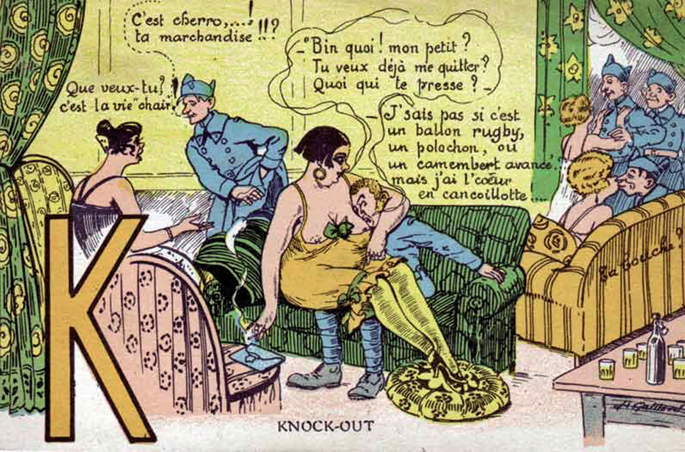Please infect me

Lodz (current Poland), March 1917. The German occupiers decided to regulate prostitution, as they did in other parts of the front. Every week prostitutes had to undergo a medical examination and had to apply flat rates: the whole night was worth DM 30; whoever wanted to spend two or three hours a night had to pay DM 20; the one who had enough time, DM 10; and the cheapest rate, DM 10, could spend the time with the prostitute, from 9 a.m. to 6 p.m.
War and prostitution have always been united. Increased demand makes conflicts good for business. But as demand increases, the working conditions of sex workers decrease: hygiene, customers, availability of resources... An ideal breeding ground for sexually transmitted diseases.
As mentioned in the portal, during World War I the military authorities also tried to reduce the risk of contagion. But many of his subjects embarked on a reverse route. The horrors of the Great War disrupted the logic of the soldier/prostitute binomial: prostitutes with sexual illnesses were more expensive than those healthier girls who passed the medical examination every week. The law on demand and supply restated prices. In fact, the demand for sick prostitutes grew enormously, as soldiers, more than sex, wanted to buy venereal diseases. Infected, they would give them sick leave and they wouldn't go back to the trenches.
Therefore, prostitution began to offer a double service: excuses to avoid sex and the front line. And more and more customers left the sex part to go straight to look for the infection. Thus, an abominable and lucrative market was created, such as gonorrhea pus, which was sold wrapped in rites, so that soldiers could rub it directly into the genitals. And prostitutes were not the only providers; they also increased the demand for mocos, for example, that were caught by the tuberculous ones. Anything was better than going in front of you.
Philadelphia, USA, 11 July 1838. John Wanamaker is born, an entrepreneur who will then have a great influence on the marketing world. He started working in the commercial area with his brother-in-law at the age of 22. They both opened a store and the business gradually grew.
In... [+]
Wu Ming literatur kolektiboaren Proletkult (2018) “objektu narratibo” berriak sozialismoa eta zientzia fikzioa lotzen ditu, Sobiet Batasuneko zientzia fikzio klasikoaren aitzindari izan zen Izar gorria (1908) nobela eta haren egile Aleksandr Bogdanov boltxebikearen... [+]
Sobietar Batasuna, 1920ko azaroaren 18a. Sobieten Gobernu Zentralak abortua legeztatzeko dekretua onartu zuen, historian lehenengoz. Handik aurrera, librea izateaz gain, doakoa ere izango zen. Urte batzuetan behintzat.
Moskuko Plaza Gorriaren izena nondik datorren pentsatzean bi aukera bururatu ohi zaizkigu...
Krimeako konkista zuzendu zuen militarrak, Ukrainako gobernadore Grigori Potemkinek (1739-1791) Katalina II.a erreginari aurkeztu zizkion herri idilikoak faltsuak omen ziren. Hortik dator “Potemkin herria” esamoldea.























